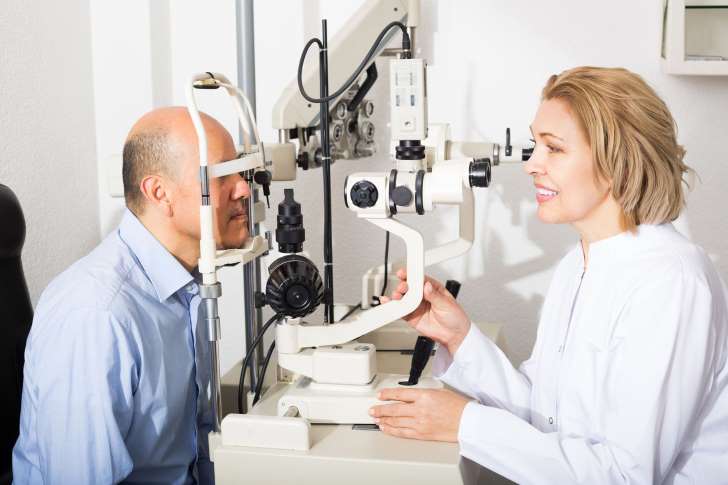You knew your eyes were responsible for seeing and adding to your looks, but did you know that they tell a lot about your health too?
It’s true——your eye doctor can spot several problems that might easily slip out of your general doctor’s notice. So now, getting that yearly eye exam might be even more important than you thought.
What exactly can your eyes not-so-secretly give away that might be important for you to know?
Here’s what you might notice.
1. Yellow spots
What It Means: According to the American Diabetes Association, an estimated 30 million people had diabetes in 2015 (roughly 9 percent of the population). Of these, experts estimate that a good 7 million are undiagnosed. They don’t even know that they have this debilitating condition.
In this case, your eye doctor will probably be the one to notice. While mild symptoms can easily get shrugged off or dismissed, eye exams will often reveal the truth.
You may have diabetic retinopathy, a condition where diabetes affects the circulation in your eye. Your eye doctor may see tiny hemorrhages and yellow deposits dotting your eye, and may recommend further testing to confirm a diagnosis.
2. Cloudy eyes
What It Means: If you’re noticing a cloudy look in your eye or clouded vision, you probably have a cataract. Most people get cataracts as they age, but you can get them as a young adult too.
If you are younger, cataracts may mean a deeper health condition; so you’ll want to look into the possibilities. For instance, both diabetes and a tumor can cause cataracts.
3. The sleepy look
What It Means: If you always look sleepy because of your droopy eyelids, you could have one of several underlying conditions. In young children, a common cause is an underdeveloped eye muscle.
The weak muscle can also lead to a problem called lazy eye, where the brain actually favors giving sight to one eye. Lazy eye can eventually affect your sight as your eye becomes “out of practice.” If caught early, your eye doctor can work to correct it.
More seriously, though, sleepy eyes can indicate a stroke or cancer, both of which could weaken the eye muscles. If your eyes droop on both sides, you may have an autoimmune disease called myasthenia gravis. This disease can be serious and needs treatment right away.
4. Dips and kinks
What It Means: This problem is another case that your eye doctor will probably be the one to notice. He won’t actually see anything abnormal with your eye, but he might see kinks, dips or nicks in your eye’s blood vessels.
This small sign indicates a big problem with your circulatory system, namely that your blood vessels are too constricted. The high blood pressure that’s likely causing it makes the tiny vessels twist and kink dangerously. In turn, those kinks are warning you of a stroke or heart attack in the near future.
5. Bug eyes
What It Means: If people are always commenting on your wide eyes when they see you, you should check into it. You might also notice and joke about them in photos of you.
While you might not think anything of them, that wide-eyed look is a common sign of Grave’s disease. This condition is a form of hyperthyroidism in which the body produces too much of its thyroid hormones.
If you have Grave’s, you may also notice an irregular heartbeat, unintentional weight loss, fatigue and a change in your menstrual cycle (for women) or erectile dysfunction (in men).
6. Floating spots/blurred vision
What It Means: Did you know that your eye doctor can sometimes tell if you have AIDS? During an eye exam, he may see inflammation on your retina or even bleeding and vision loss. These signs indicate the presence of AIDS.
Outside of the doctor’s office, you might notice unusual blind spots, blurred vision or floating spots as you look around you.
7. Bumpy eyelids
What It Means: While these bumps on your eyelids don’t usually look pretty, you can relax with this common eye problem. If they’re itchy or painful, the bumps are probably a stye, especially if they’re on your lower eyelid.
Most styes happen because of a bacterial infection; so be sure that you’re not using old or borrowed makeup or touching your eyes unnecessarily.
If you don’t have any pain, the bump is merely a clogged oil gland. People with oily skin may get them, and they should go away in a few days. You need only consult your doctor if the bump doesn’t go away after several weeks.
Your eyes truly are a window into your health, helping you and your doctor see many health problems in their early stages. This list gives you a good idea of what your eyes might give away about you and how you might spot them yourself. All you have to do is keep your eyes open to what they’re trying to tell you.












